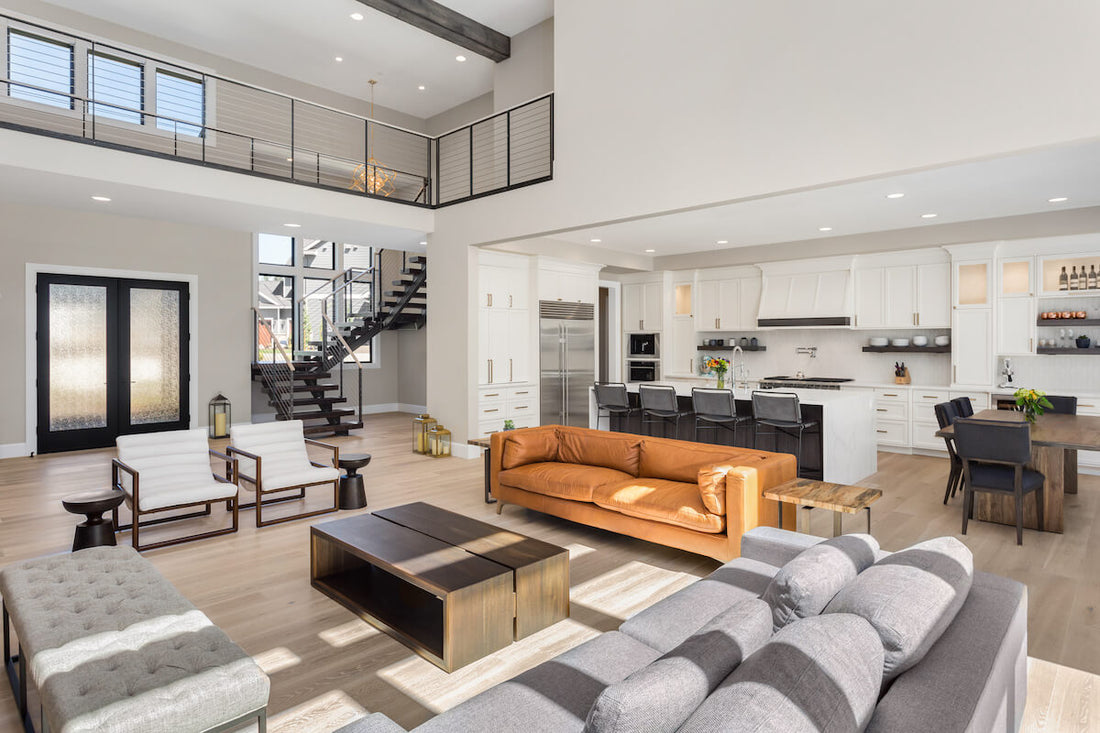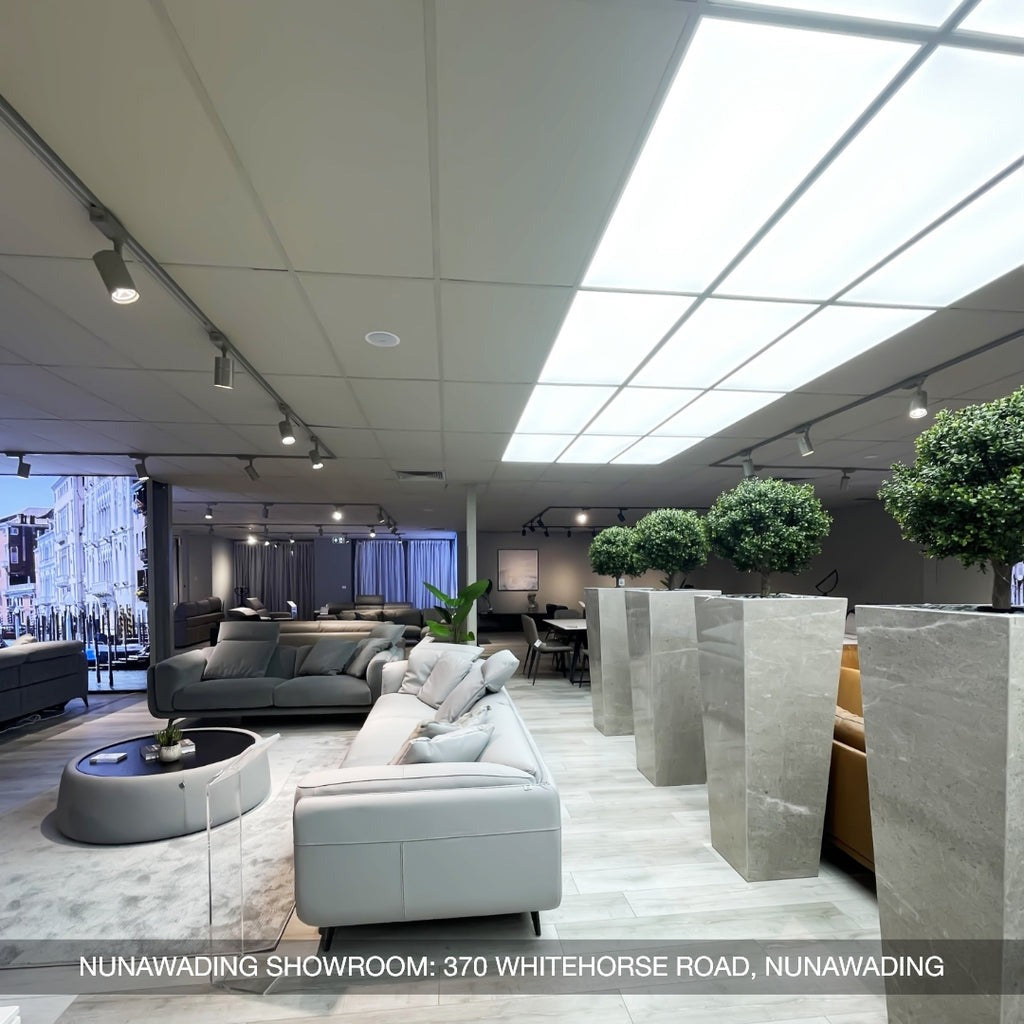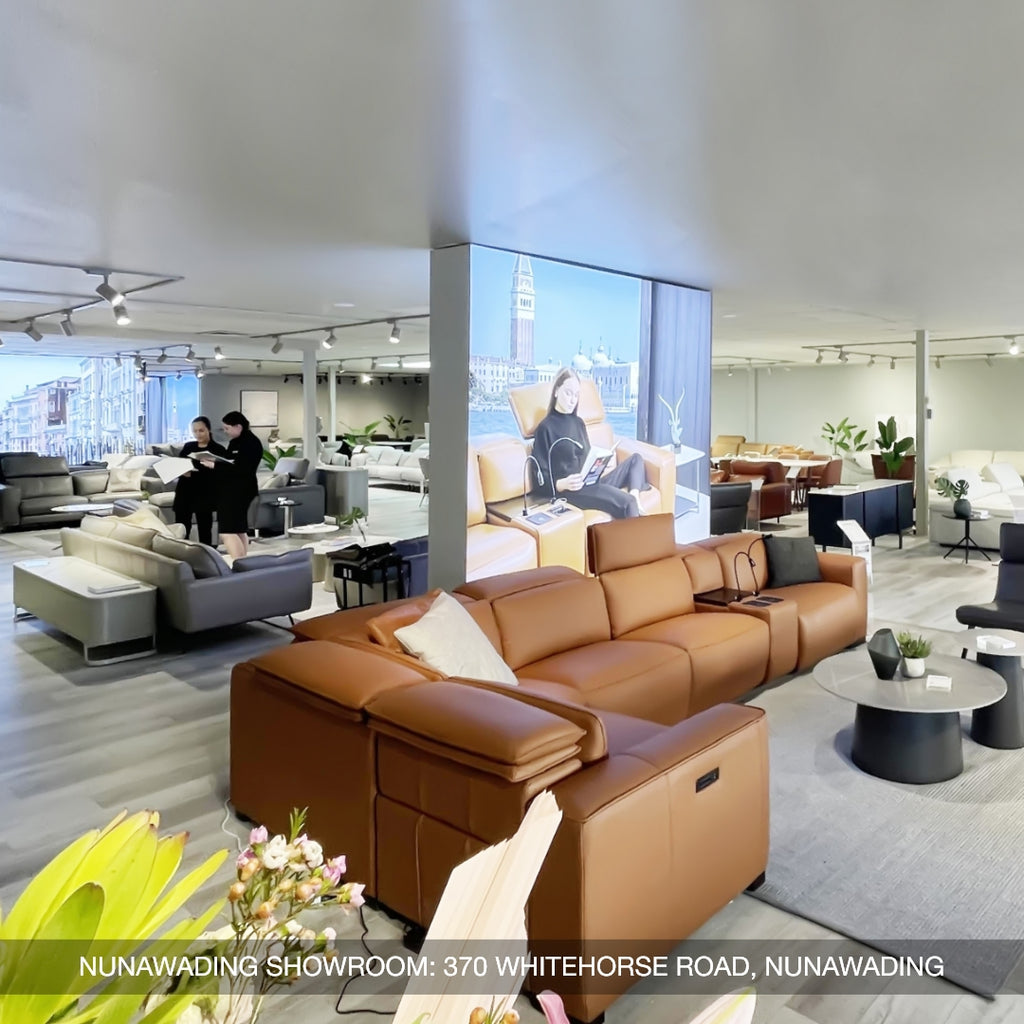A large living area offers endless possibilities, but without thoughtful layout, it can easily feel empty or overwhelming. Instead of filling the space randomly, consider smart ways to divide it into functional, stylish zones. In this guide, you'll find practical division living room ideas that suit a variety of layouts and lifestyles. From using furniture placement to creative partitioning, these ideas for a large living room will help you make the most of every square foot, beautifully and efficiently.
Designing Distinct Zones
A large living area presents exciting opportunities, but without clear definition, it can quickly become disjointed or underutilized. The key to unlocking its full potential lies in thoughtful zoning, transforming one expansive space into multiple functional environments that flow naturally into one another. With the right balance of structure and style, you can create areas for relaxing, dining, entertaining, or even working, all within a unified design.
Establish Distinct Functional Zones
Before selecting paint colors or furniture pieces, you should define how each part of your large living area will function. Will one zone serve as a cozy lounge with a large sofa? Is another reserved for formal dinners, where your dining area design takes center stage? By clearly outlining the use of each section be it entertainment, conversation, dining, or work you ensure that every element in the room supports a specific need. This clarity lays the groundwork for seamless flow and smarter layout decisions.
Position Furniture Away From the Edges
One of the most transformative tricks when planning a living room large is to break free from the walls. Instead of placing furniture flush against the perimeter, pull it inward to create intimacy and movement. Floating a modular l shaped sofa in the center can help form a soft boundary for a lounge zone, while a stylish console table or bookshelf at its back subtly separates it from the adjacent dining area design. This furniture placement not only enhances aesthetic appeal but also signals where one function ends and another begins, making the space feel both grounded and dynamic.
Aim for Pleasing Proportions When Dividing the Room
A well-zoned room is not just functional, it’s also balanced. Pay close attention to proportions when dividing your large living area. In rectangular layouts, try splitting the space so that each section has a width between one half and two thirds of the room’s total length. This ratio promotes harmony and avoids creating awkward or imbalanced sections. If your space allows, consider square zones as well, especially when working with large rugs or statement pieces like a formal dining table. In such cases, the dining table specification, including size, shape, and seating should guide how much area you allocate, ensuring the dining zone feels spacious but not overpowering. Well-proportioned zones elevate the entire room, adding rhythm and elegance to the overall design.

Utilize furniture arrangements, area rugs, and lighting to visually segment different zones within the expansive living room.
Take Into Account Existing Aesthetic Separations
When working with a large living area, one of the smartest ways to begin is by observing its existing architectural elements. Features such as ceiling beams, recessed walls, fireplaces, or French doors offer natural visual cues that can guide your layout decisions. Instead of forcing divisions arbitrarily, let these elements inspire you. Aligning your zones with these preexisting lines helps maintain continuity while bringing a sense of effortless structure. This method is especially helpful for those seeking graceful and understated division living room ideas that enhance both function and form.
Think About How Your Furniture Would Look in a Smaller Space
Dividing a large living area into zones can quickly change the proportions of your room, so you should evaluate how each furniture piece fits within these smaller sections. Oversized items may feel cramped, while delicate furniture might seem lost. For fans of modern living room furniture, this is the time to assess both visual scale and spatial impact. A ceramic coffee table, with its clean lines and grounded presence, can serve as a central anchor without overwhelming a zone. If upgrading your furniture isn’t an option, lightweight shelves, open-back bookcases, or fabric screens can act as non-permanent dividers. These keep sightlines open while still helping you establish structure, perfect for adapting to various ideas for a large living room with flexibility.
Strategically Plan the Layout of Your Walkways
No matter how beautifully divided your space may be, ease of movement must be a priority. In any large living area, especially one with multiple zones, it’s essential to allow at least three feet of clearance for walkways. This ensures that every section is comfortably accessible for all occupants, including children, elderly family members, or guests with mobility aids. Begin by observing how people naturally navigate the room, then shape the layout around those paths. Arrange seating to face each other, leave generous space between a table and surrounding chairs, and ensure that modern dining tables have room for chairs to be pulled out smoothly. A well-planned path doesn’t just enhance flow, it brings your zones together in a way that feels intentional and easy.

A careful selection of appropriately sized furniture contributes to the overall aesthetics and functionality of the room.
Choosing a Divider Method
The right divider method can transform a wide, undefined space into multiple intimate, purposeful zones. Below are practical and stylish division living room ideas that align perfectly with today's interiors, especially if you’re exploring modern aesthetics like modern living room ideas or looking to enhance your large living room with minimal effort.
Employ Area Rugs to Delineate Individual Spaces
One of the most effortless yet visually impactful ways to divide a large living room is through the use of area rugs. By strategically placing rugs under a seating group or beneath a dining table, you subtly carve out distinct areas within the same space. This method is especially effective when paired with a smart color combination for interior, using contrasting yet complementary tones helps each zone stand out without feeling disconnected. Rugs also introduce texture and warmth, giving even the largest spaces a grounded, cozy feel. For those researching ideas for a large living room, this is an accessible and flexible starting point.

By placing rugs in specific areas, you achieve a dual purpose: visually defining different rooms while adding a touch of style and warmth to each designated space.
Opt for a Tall Bookcase for Practical Division
If you're seeking a solution that doubles as storage, a tall bookcase offers both functionality and style. Choosing a unit that extends beyond head height creates a clear physical division while still allowing you to maintain the flow of a large living area. Open-back bookcases are especially popular in modern Italian living room ideas, as they offer a light, airy feel and can display both books and curated decorative items. Position the bookcase between two zones, such as between a lounging area and a workspace, to maintain visual connection while defining purpose.
Illuminate Each Zone with Appropriate Lighting
Lighting plays a quiet but powerful role in shaping how we experience space. Instead of relying on a single overhead light, divide your large living room with layered lighting strategies. Use pendant lights or sconces to highlight the dining area, table lamps to define a reading nook, and floor lamps to frame a conversation corner. This approach allows you to create a sense of intimacy within each zone while adding character to the room. Well-placed lighting not only supports your division living room ideas but also highlights architectural elements, art, or even your color combination for interior choices.
Ponder on Curtains or Hanging Panels
For those who prefer flexibility or enjoy changing their décor with the seasons, curtains or hanging panels offer a soft and stylish solution. Mounted from the ceiling, curtains can be drawn or opened as needed, offering privacy without closing off the space entirely. Choose fabric and patterns that reflect your interior palette and complement your chosen color combination for interior, or opt for sheer neutrals to maintain light flow. This method works well in modern living room ideas, where elegance meets practicality. Similarly, hanging panels can be customized in material and height, giving you endless options to redefine the space.
Consider Sliding Doors or Panels
Separating a large living area, sliding doors or structural panels offer both privacy and sophistication. Made from materials like solid wood, metal, or semi-opaque glass, these dividers not only block sound and scent but also create visual boundaries that anchor each zone. Sliding doors are especially effective in layouts that require occasional separation, such as dividing a lounge from a study or dining area. While installation may require professional assistance, particularly if no existing frame or opening is present, this option is ideal for those looking for long-lasting, elegant division living room ideas that enhance both function and design.

For a more substantial division within a large living room, considering sliding doors or panels made from solid materials like wood or semi-opaque glass can be an effective solution.
Utilize Long, Low Furniture to Partition the Room
Consider using long, low-profile furniture to gently break up the space without closing it off. A backless or low-backed sofa placed across the center of the room can act as an unobtrusive divider, separating the seating area from other zones like a dining corner or reading nook. This layout encourages social interaction while avoiding the cavernous feel that sometimes comes with a large living area. For those who frequently entertain guests, this is one of the most practical and welcoming ideas for a large living room, as it creates cozy pockets without disrupting the overall openness.
Explore Screens or Room Dividers
When flexibility and style are your priorities, lightweight screens or portable room dividers become valuable tools for shaping space. Available in a variety of materials, such as wood, rattan, glass, or fabric these dividers can be selected to match your interior theme. Transparent or openwork designs are perfect for maintaining light and visibility, helping preserve the airy feel of a large living area. In contrast, opaque or solid-panel options give more visual privacy. This method works particularly well in rental spaces or homes where permanent changes aren’t ideal. That said, you should keep safety in mind: lightweight screens may not be the best choice for homes with small children or active pets, as they can easily be knocked over.
Multifunctional Furniture Contributing to Space Division
For a thoughtful and efficient approach to layout, multifunctional furniture is a smart solution, especially when navigating the challenges of a living room large in size. Shelving units, for example, can act as dividers while offering vertical storage for books, plants, or decorative items. Console tables can help define walkways and provide a surface for lighting or décor, subtly reinforcing spatial boundaries. Ottomans with built-in storage or modular pieces that convert between seating and sleeping are excellent additions to underutilized corners. These versatile items offer both purpose and style, supporting some of the most effective division living room ideas without cluttering your space. When used strategically, multifunctional furniture can help transform an oversized room into a dynamic, well-balanced environment.
Instead of letting open space feel overwhelming or underused, embrace these creative solutions to define comfort zones that reflect your lifestyle. If you're ready to elevate your space, explore COZY's curated collection of quality sofas and functional furniture, perfect for bringing your favorite ideas for a large living room into reality with elegance and ease.





